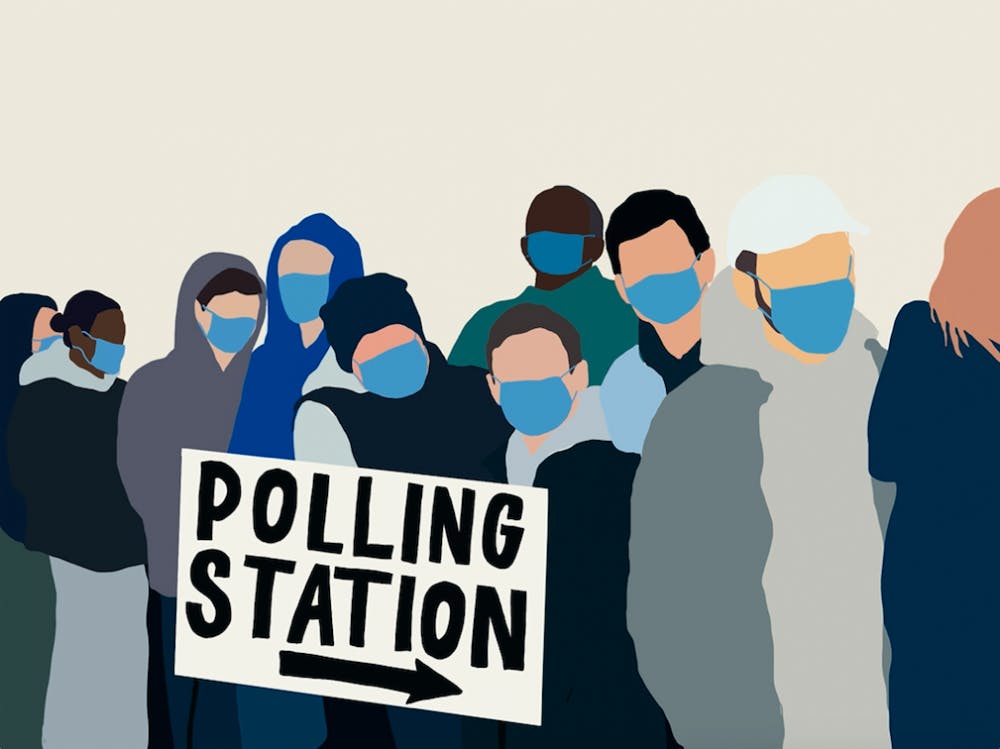Rally against interference or accept delayed results but don’t buy into fears about illegitimacy

Alexander
By Sadie Fick
2020 has been a historic year in many ways.
The presidential elections are shaping up to be yet another, both for the impact results will have on the country and for the expected delay of those results.
In the last four elections, we had a solid idea of who won by the end of election night, but this year final results could take weeks.
Among concerns of foreign interference and President Trump’s refusal to say if he will accept election results, many are worried about what delayed results could mean.
In Bellingham, local political organization Indivisible Bellingham is planning to rally alongside 200 or more other events across the nation if President Trump implies he will reject election results.
Doug Brown, an Indivisible Bellingham leader, said he hopes they don’t have to follow through the plans to rally.
“[Fighting for the results] could be really, really wrenching, you know, it could tear our social fabric apart,” Brown said.
Brown said he has a good feeling about the election and thinks it will be decided by a large margin, but if there’s trouble, he is encouraging people to come together to protect democracy.
“This is our democracy,” Brown said. “We welcome conservatives, we welcome Republicans, we welcome anybody who's got a constructive idea about democracy, because that is [what’s] really under threat.”
Eric Baril, fourth-year Western student and president of the WWU Political Science Association, said they think expectations of interference speak to the fear and uncertainty people are feeling about the election.
“We heard during the debate … that Iran and Russia are trying to influence our elections, and you're seeing the president quoting some of the narrative they're trying to put out,” Baril said. “[That] undermines the faith in the election process.”
Markie McBrayer, a professor of political science at the University of Idaho who studies local politics, said local and state officials are doing as best they can, but there will be doubt as long as political elites say the election isn’t safe or valid.
“The president keeps saying, ‘Well, we need to know on election night, we have to know on election night,’ and that of course sets the expectations for his followers,” McBrayer said.
McBrayer said we never actually know the results on election night; instead, we just have a good estimate which relies on being able to predict most states and precincts. Then, we pay attention to purple ones to see which direction they’re leaning.
This year, higher voter turnout rates and more mail-in ballots are unknown factors that impact the ability to make these predictions, McBrayer said.
Even after counties add up all the ballots and certify those results several weeks after Election Day, official results do not exist until after the Electoral College vote in December.
In McBrayer’s studies of local elections, not knowing final results on election night is normal. Since a margin of 10 votes can make a difference in the outcome, counties have to do a full
count and then often a recount, she said.
“For people who [just] follow federal elections, … it feels like, ‘Oh my gosh, why are we doing it this way?’” McBrayer said. “But, it's really not a huge departure from what we normally do.”
Baril said counting every vote can be important even in national elections.
“I’m originally from Florida,” Baril said. “The 2000 election there with George W. Bush and Al Gore came down to a very small count.”
In the 2000 election, 537 votes gave Bush the Florida electoral votes he had to have in order to win the presidency — despite losing the popular vote.
The Florida Supreme Court ordered a manual recount so all ballots would be counted despite technical issues with the punch-card ballots Florida used, but the U.S. Supreme Court reversed that decision.
Florida, like all states except Nebraska and Maine, is a “winner take all” state, meaning it does not award its electoral votes in proportion to the states’ popular ballot count. In order to win a presidential election, one candidate must win 270 of 538 possible electoral votes. With the 25 from Florida, Bush secured 271.
Another uncertainty around election results is the variation in policies from state to state, McBrayer said. There is variation in where mail-in ballots are common, how soon ballots can be counted and when ballots have to arrive or be postmarked by in order to be counted.
“Given that it's such a confusing process for many people, you can understand how it's easy to persuade voters that this is a corrupt process, or it's not valid,” McBrayer said.
In Whatcom County, initial results will be posted at 8 p.m. on Election Day on the county auditor’s website.
Whatcom County Auditor Diana Bradrick said normally the county auditor’s office is able to count nearly all of the ballots received on Election Day before posting the results.
This year, a rush of last-minute voter registrations could take staff away from processing ballots, Bradrick said. However, staff will keep processing ballots and updating results until all ballots deposited in a drop box before 8 p.m. or postmarked by Election Day are counted.
Even ballots without a signature or with a contested signature will be counted if the auditor’s office can contact the voter and verify their identity before Nov. 23.
Livestreams of all ballot processing steps are available to watch on the Whatcom County Auditor’s website from now until the results are certified by the Auditor’s office on Nov. 24, a full 21 days after Election Day.





